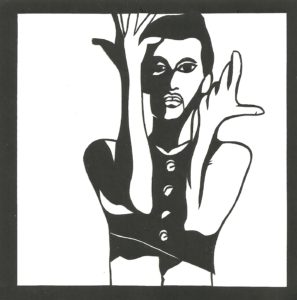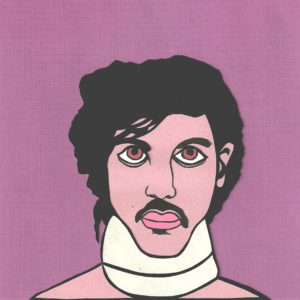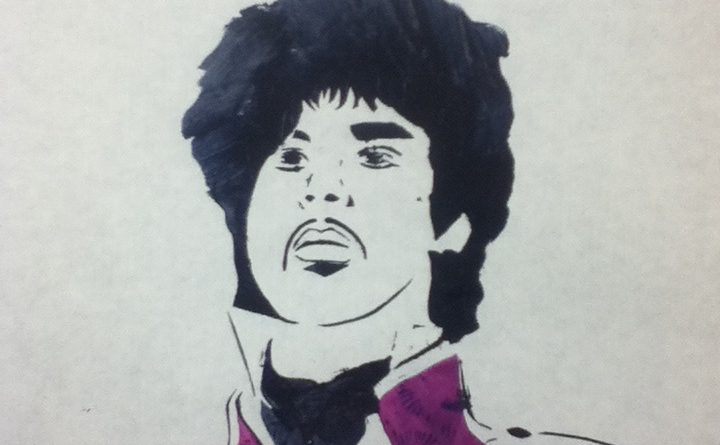In late 1982, Prince released his fifth album, “1999.” I was 7 years old and my mom brought me home this gatefold double-LP. Until this point, my record collection consisted of only the ones with the coolest sleeves — KISS, Toto, Journey, and the like. Of course, this record blew my tiny 7-year-old mind, and I would never be the same. I hadn’t heard anything like Prince’s melting pot of rock, funk, R&B, and pop before. As it turns out, no one else had either, and his music would only get better, more singular, and popular in the coming years. I love my mom so much for knowing that her little boy needed this in his life. The infectious synth hook of “Delirious.” In my Underoos, I would chant “Dance, Music, Sex, Romance” as the record spun over and over again in our living room.
In the next few years, Prince would release more albums, have bigger hits, star in one huge pseudo-biographical movie, and perform legendary concerts. He wrote hits for other groups, too. He wrote the Bangles’ “Manic Monday” and Sinead O’ Conner’s “Nothing Compares 2 U.” Chaka Kahn’s “I Feel For You,” and “Stand Back” for Stevie Nicks. He wrote entire albums for The Time. He collaborated with Miles Davis, George Clinton, Madonna, Mavis Staples, Maceo Parker, and Janelle Monae. He was a monster on the guitar, and he played most of the instruments on his records.
When I was 13, my aunt Charlene took me to my first big concert. It was the Hartford, Conn., stop on Prince’s 1988 “Lovesexy” tour. He entered the stage in a white Thunderbird (referenced in “Alphabet Street” — “So glam, it’s absurd”). He shot hoops — yes, he shot hoops onstage. He played songs from the then-still-unreleased but widely bootlegged “Black Album.” In fact, the whole show was arranged so that the first half consisted of all his dirtiest, funkiest material, but after the intermission he played his most spiritual, positive songs.
I’ve since talked with my aunt about this concert, and while she appreciated the spectacle and theatricality, as well as the musicianship of the Lovesexy show, she was turned off by what she perceived as misogyny. My young mind never perceived it that way, but I know that the show was intended as a piece of theater in which Prince’s character was tempted by darkness all around him, and he ultimately turned his back on all that to embrace God, positivity, spirituality, etc. At the time, I only knew that I loved these songs, and that I had wanted to see him perform for years. His guitar looked like a cloud. The band members all looked like superheroes. Sheila E. was an incredible force behind the drums. I heard “Purple Rain live for the first time.

Over the next few years, Prince released the soundtracks to Tim Burton’s “Batman” movie (number one on Billboard; 11 copies million sold), and his own “Graffiti Bridge” ( a sort of sequel to “Purple Rain”). Then came “Diamonds and Pearls.” Released on Oct. 1, 1991, “Diamonds and Pearls” came a week after Nirvana’s “Nevermind.” I was 16, had gone to the first Lollapalooza festival, and I was immersed in the burgeoning alternative scene. Prince was feuding with his record company, would soon change his name to an unpronounceable symbol, and started forcing hip-hop and new-jack swing sounds into his music. For the first time in a decade, he was following trends instead of setting trends. I continued to collect Prince’s music; I made monthly trips to Boston to search for live bootlegs, and I subscribed to fanzines where I connected with other collectors all over the world with whom I could trade cassettes. But I was still mostly interested in his 1980s output. His new stuff didn’t excite me as much as newer bands like Royal Trux and Mudhoney. I started a noisy punk-ish band in 1992. I began to follow a different path.
But the thing is, I never really gave up on Prince. I bought “Sign O the Times” and “Parade” on LP, cassette, and compact disc. Those remain two of my favorite records to this day. In the 2000s, I discovered soul music, and I see where Prince fit cleanly in the lineage between the giants of the ’60s and ’70s, and his modern-day acolytes like D’Angelo (whose 2000 release, “Voodoo,” is a perfect album, and is clearly a love letter to Prince).
In 2000, I saw Prince again, in Worcester, Mass., at a “Hit N Run” show (he’s done several tours where he announced each show only a day or two before it happened). My boss at the record shop where I worked hooked me up with a ticket. It was pricey, but the experience was incredible. It was a stripped-down affair. No cars or basketball hoops on stage. Just hit after hit after hit. I knew at this point that I would try to see him play any time he came around. The next time I saw him was on the “Musicology” tour of 2004. It was another in an endless string of comebacks for Prince. “Musicology” was a top-five album in the U.S. My friends and I somehow scored crazy cheap tickets. We were in the nosebleed seats at the Boston Garden, and we teared up as I heard “Purple Rain” live for the third time.
The last time I saw Prince was in December of 2013 at Mohegan Sun in Connecticut. My friend Casey and I were treating ourselves to all the crazy big shows we wanted to see around this time. We saw Beyonce and Justin Timberlake. But this was the big one. Almost a decade had passed since the last Prince show I had seen. He was a different person, and so was I. Casey had never seen him before. Janelle Monae opened the show, and Prince was wheeled onstage on a dolly to sing their duet “Givin’ Em What They Love,” from her album “The Electric Lady.” He sang his verse, then was wheeled away as quickly as he came. The rest of her set was fantastic. Then Prince did his own set with his band, 3rdeyegirl. Prince played hits, obscurities, covers, gospel. He played whatever he wanted. He played for hours.

After two encores, the house lights came on, and everyone filed out. As we were shuffling along on our way out of the arena, we heard the rumbling of instruments from the stage. We rushed back inside and got right in front of the stage, where Prince and the three women from his band appeared for one last song. They played to a mostly empty room with the house lights on. It felt like a hallucination.
Once it was actually over, we headed to the after-show. Small room, late night. Prince was infamous for getting loose and playing off-script until the early morning. On this particular night, he didn’t play at all, but we were treated to a full show by his protégé Liv Warfield, and another set by his band the New Power Generation. The legendary Doug E. Fresh spun records between sets, rapped a little, and we all danced to old-school hip-hop, funk, and soul. Prince did make an appearance. He hung out for a few, and premiered for us the song “Funknroll,” which, at 3 in the morning, after witnessing so much Prince, sounded so alien, so fantastic, and was exactly what we wanted new Prince to sound like. Current, vital, funny, sexy, hot, perfect. At 4 in the morning, the show was over, and we drove into the night.
Casey and I agree that what we paid for that evening was the best money we ever spent.
Prince had been doing more “Hit N Run” shows in the last year, most recently solo “Piano and a Microphone” shows. I’ve been patiently waiting for one to come to the Northeast, but sadly, his last-ever show was last week in Atlanta.
I’m happy that Prince was so productive in recent years, and he was rightly receive

